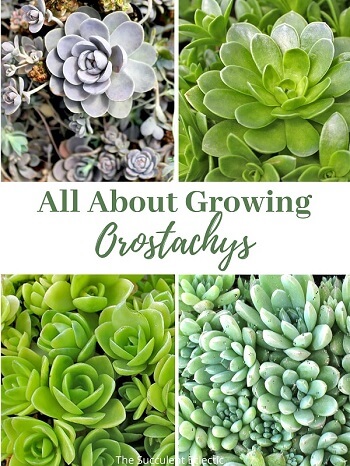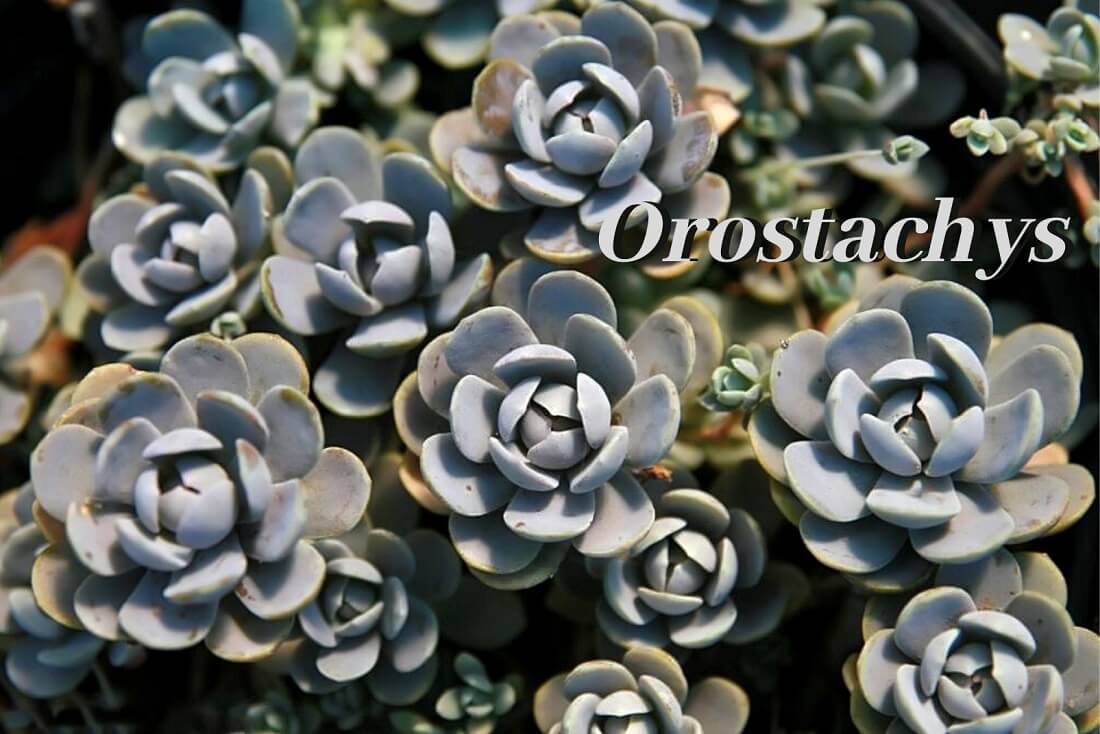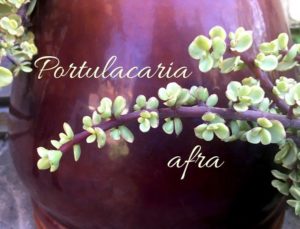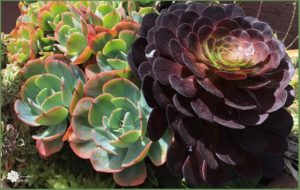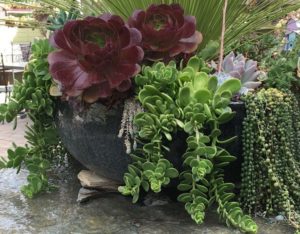Orostachys (Or-oh-STACK-kiss) is a small genus of succulents native to the mountain regions of China, Japan, Korea, Kazakhstan, Russia, and Mongolia. The elegant, rounded rosette forms are reminiscent of Sempervivum. Like semps, Orostachys have a “hens and chicks” growth habit and are impressively cold-hardy. You may not have heard of them before — they are hard to find but so rewarding to grow. Let’s learn more about these hardy succulents.
Orostachys — The other, cold-hardy rosette succulents!
In this Post We'll Cover:
{Please note, some links in this post may be affiliate links to sites that pay me a small commission if you click on the link and make a purchase. This commission is at absolutely no cost to you. I only recommend products and companies that I have worked with and truly love! ~Kat}
All About Growing Orostachys
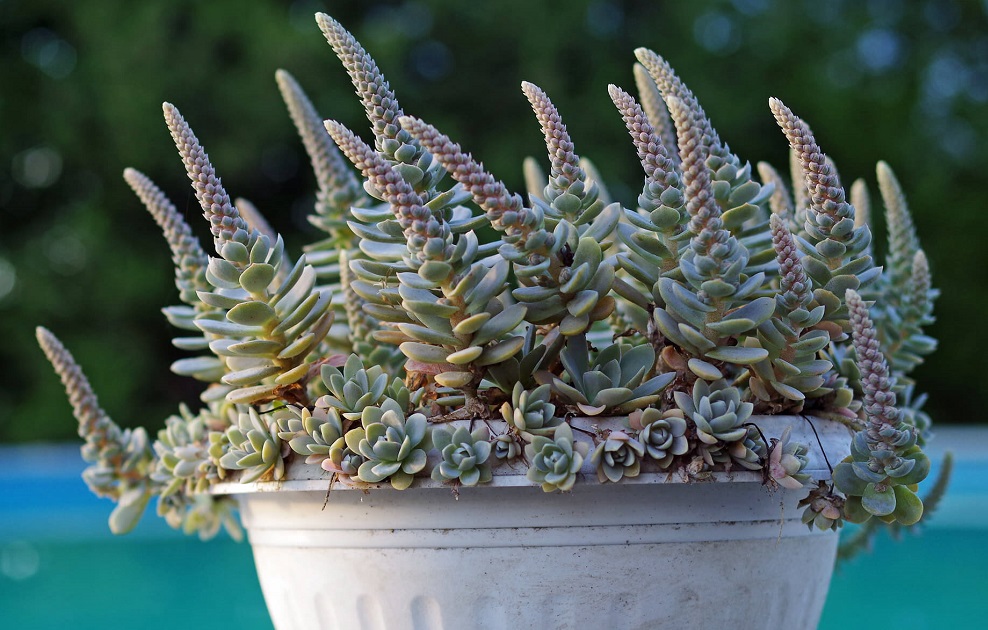
Orostachys form a central rosette with smaller, rosette-shaped pupsSucculent pups are the baby succulents that form at the base... coming off the mother plant. The pups are attached to the mother rosette by modified stems called “stolons.” The leaves are much more rounded than those of Sempervivum. After 2-3 years, Orostachys form tall, conical spires of closely packed blooms in fall. These showy bloom stems give rise to the common name of Chinese dunce cap succulents.
Orostachys are monocarpic succulents. The mother rosette that forms the bloom spire will die after the blooms fade. But not to worry — first, many pups are formed to result in more and more Chinese dunce caps to come. In winter, Orostachys go dormant and die back to the ground. But they come back lush and full when spring returns.
Orostachys thrive in nutritionally poor, fast-draining soil. Plant where they will receive full sun.
Orostachys – Ground Cover Succulents
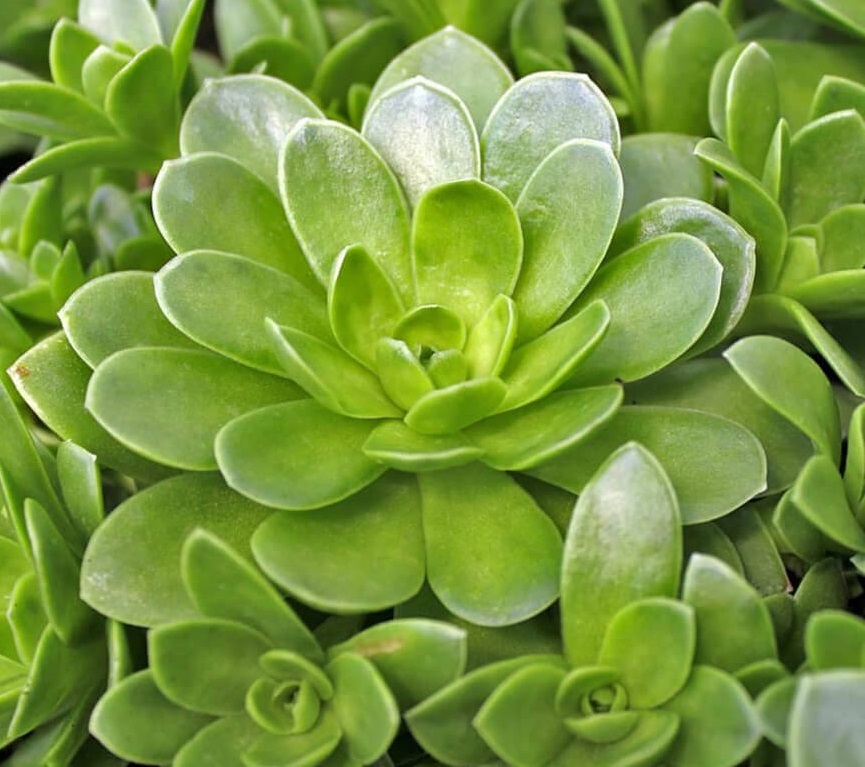
Orostachys form dense mats of low-growing silver or green foliage. They form a handsome ground cover. Chinese dunce caps grow quickly, especially with regular watering. Once established, they are as drought-tolerant as most succulents. These tough little plants are highly effective in rock gardens, raised beds, and containers. Amend the garden soil with pumice to improve the drainage.
Orostachys have a shallow root system, so they will thrive in shallow containers like bonsai pots. In time, the baby rosettes will spill over the edge of any container, adding tremendous charm.
Orostachys — Cold Hardy Succulents
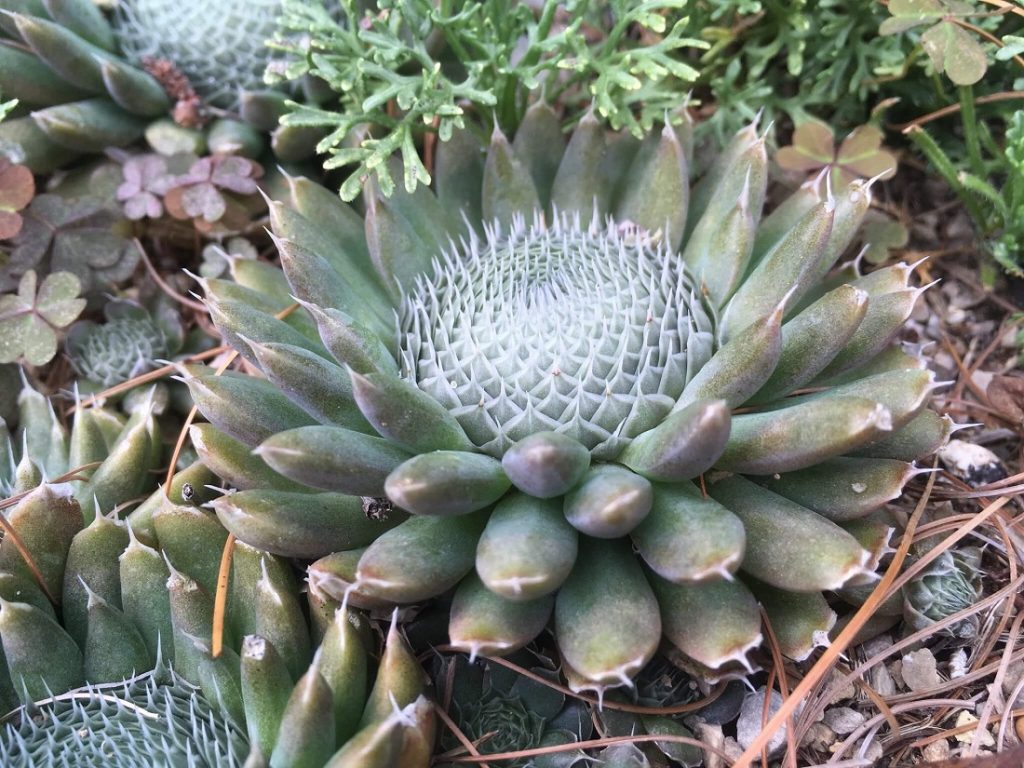
All Orostachys species form rosettes, but the shapes and colors vary. Chinese dunce caps are cold-hardy succulents, though some are more cold-hardy than others. All will withstand temperatures in climate zone 6, -10° F (-23.3° C). Some will thrive outdoors year-round, even in zones 4 and 5. They form a chemical akin to anit-freeze that prevents water from crystallizing within their cell walls when the temps drop below freezing. This is the essence of winter hardy succulents.
Orostachys spinosa, shown above, has an intriguing growth pattern. The central leaves form a Fibonacci sequence. Overall, the plant reminds me of a sunflower! Exceptionally cold hardy, O. spinosa thrives where winters reach -30°F (-34.4° C). It can actually photosynthesize through snow cover!
While Chinese dunce caps are winter hardy succulents that shrug off sleet and snow, they perform best where winters are relatively dry. Rather than frequent cycles of snow and thaw, where the ground gets drenched, they do best where snowpacks remain in place until spring. If you are planting Orosctachys where you receive frequent winter rains or multiple snow thaws, consider planting on a slope and be sure to amend the soil so it drains rapidly.
PropagatingPropagating (PRAH-puh-gate-ing) a plant is to grow another p... Orostachys
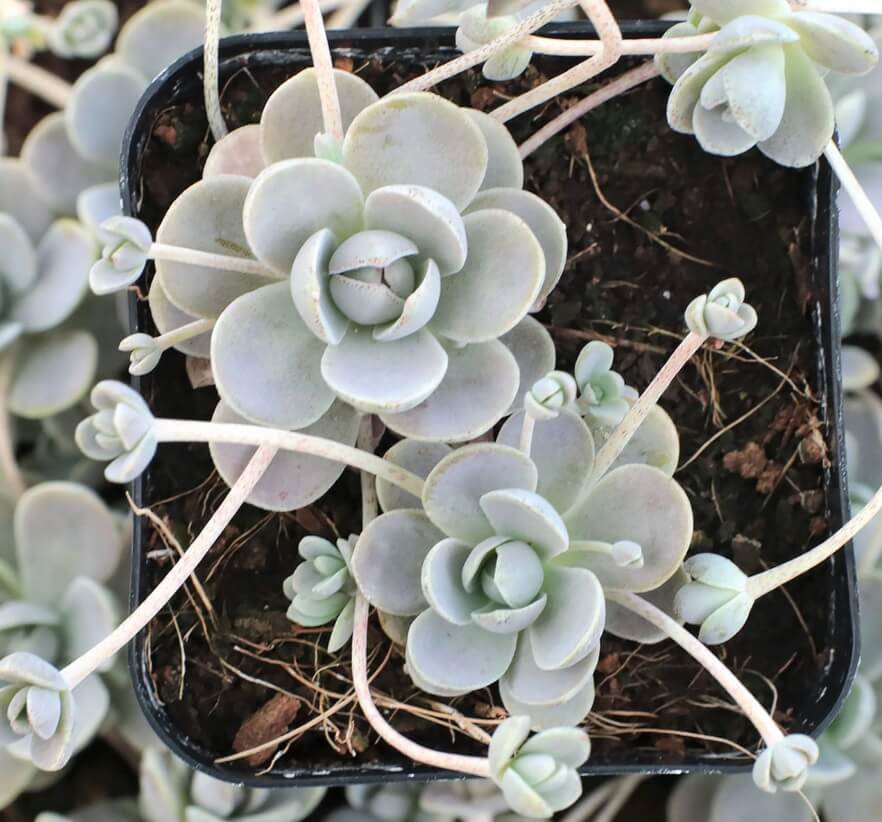
Orostachys form wide mats of densely packed rosettes. The plants propagate themselves by forming offsetsSucculent offsets are the baby succulents that form at the b... connected to the mother plant by horizontal, modified stems called stolons. In time, the baby plant reaches the soil and roots in. The stolonA stolon (STOLE-ehn) is a horizontal root, growing just abov... eventually dries and breaks, leaving an independent plant.
You can propagate Orostachys by removing a pup and snipping the stolon. It is quicker and easier when the pup has already formed a network of roots. Chinese dunce caps can also be propagated by individual leaves.
Is Orostachys Toxic to Pets?

Cold-hardy Orostachys is non-toxic and entirely safe to grow around cats, dogs, and small children —even if they nibble!
This symbol denotes pet-safe succulents. For more information about succulents and pets, just click on this image anywhere on this site.
Orostachys Pests
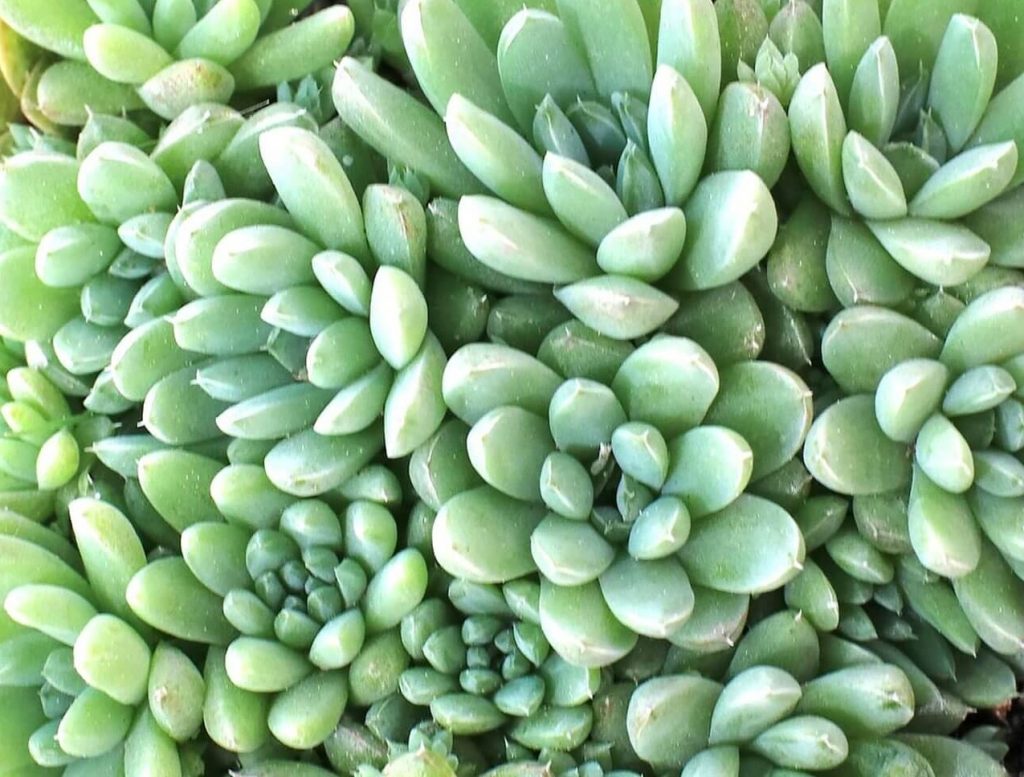
Orostachys are easy to grow, without serious issues with disease or pests. Mealybugs can become a problem, especially where soils poorly drain. They tend to collect between the tightly packed leaves of the plant, making the insects difficult to reach with isopropyl alcohol. Pests are easily prevented from troubling your Chinese dunce caps. Just work some dry worm castings into the soil when you plant the Orostachys. Or add it as a top dressing to established plants. Worm castings are my preferred method of pest prevention for all succulents
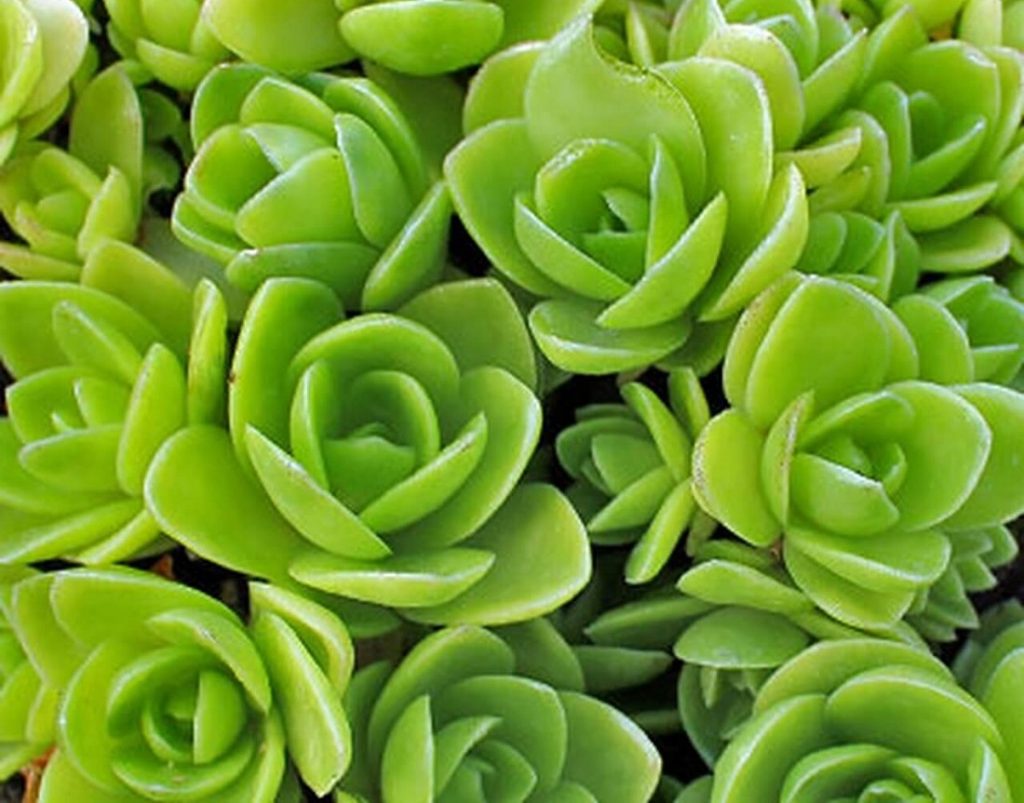
Orostachys are elegant and charming succulents that deserve a place in your garden. But they can be difficult to find. Mountain Crest Gardens is a great source, probably because they have the finest selection of cold hardy succulents I have found. While these beauties thrive in the cold climate garden, they are also lovely in mixed succulent arrangements!
Are you currently growing Orostachys in your garden? If not, do you plan to? I would love to know! Please take a moment to leave me a comment and let me know! I’ll get right back to you!
’til next time, Stay safe and plant succulents!

P.S. – For more great succulent information, please subscribe and receive my FREE course, 7 Steps to Succulent Success! Thanks!
P.P.S. Why not join my Facebook Group for succulent-lovers? We talk succulent care, propagation, succulent identification and design. It’s a warm and welcoming group that would love to meet you!
